Space News
Nasa
212
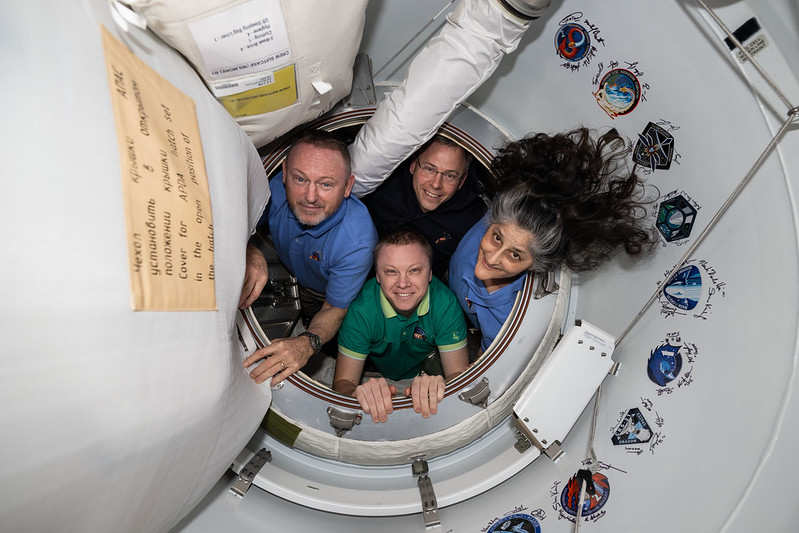
Image Credit: Nasa
NASA’s SpaceX Crew-9 Scientific Mission on Space Station Concludes
- NASA's SpaceX Crew-9 mission with astronauts Hague, Wilmore, Williams, and Gorbunov concludes their science mission on the International Space Station after conducting 150+ unique experiments.
- Key milestones included microalgae research for oxygen conversion, testing of the Enhanced Exploration Exercise Device for crew health, and studying how moisture levels affect plant growth.
- Experiments like the Packed Bed Reactor and flame spread studies aim to improve systems for water recovery and fire safety in spacecraft.
- The study of microbial growth, workout monitoring, 3D printing of medical devices, and using wood in satellites were other significant investigations conducted.
- The crew also engaged in studies on manufacturing microbes in space, repairing equipment like the NICER instrument, and observing Earth phenomena for research purposes.
- Research on nutrient production, solar wind analysis, hearing tests, material aging, and satellite deployments highlighted the breadth of scientific activities on the ISS.
- Experiments like CODEX for solar wind study, HUNCH student-designed tools for astronauts, and Astrobee robot demonstrations showcased innovative research initiatives.
- The article also mentioned CubeSat deployments, arm relocations for debris removal, and Dragon spacecraft operations in delivering supplies to the ISS.
Read Full Article
12 Likes
Arstechnica
375
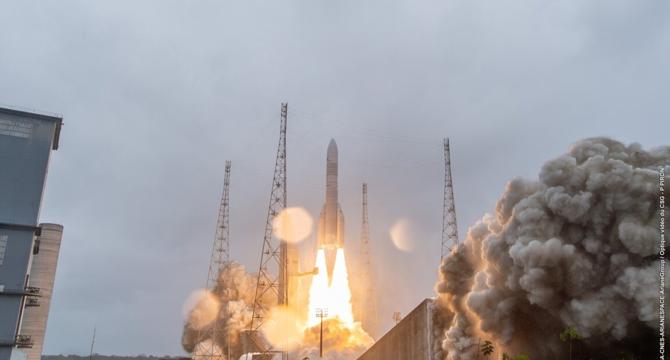
Image Credit: Arstechnica
When Europe needed it most, the Ariane 6 rocket finally delivered
- Europe's Ariane 6 rocket successfully deployed a high-resolution reconnaissance satellite for the French military.
- The rocket lifted off from French Guiana, powered by twin boosters and a hydrogen-fueled core stage engine.
- The strap-on boosters were jettisoned after two minutes and the core stage was jettisoned after eight minutes.
- The Ariane 6 upper stage deployed CSO-3, a French military spy satellite, to provide optical surveillance imagery.
Read Full Article
22 Likes
Nasa
267
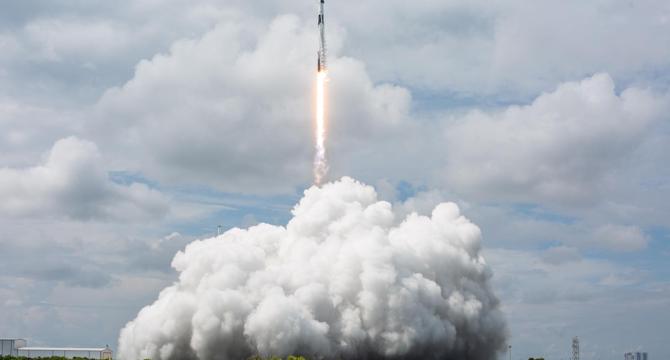
Image Credit: Nasa
NASA Invites You to Share Excitement of Agency’s SpaceX Crew-10 Launch
- NASA invites the public to join the excitement of the SpaceX Crew-10 launch to the International Space Station.
- Astronauts Anne McClain, Nichole Ayers, Takuya Onishi, and Kirill Peskov will fly aboard a SpaceX Dragon spacecraft.
- The launch is scheduled for March 12, 2025, from Kennedy Space Center in Florida.
- Public can register to be a virtual launch guest and receive exclusive resources and updates.
Read Full Article
16 Likes
Livescience
172

Image Credit: Livescience
Powerful 'equinox auroras' may arrive soon: Why changing seasons can bring the best northern lights
- The sun is about to enter the Northern Hemisphere, leading to the possibility of stunning auroras being visible.
- A significant increase in daylight will be observed in the Northern Hemisphere as the vernal equinox occurs on March 20.
- Equinoxes lead to an increased likelihood of auroral activity due to the alignment of Earth's magnetic field with the solar wind.
- The 'equinox effect' can persist for a few weeks, making it an exciting time for aurora enthusiasts in northern latitudes.
Read Full Article
10 Likes
Discover more
Nasa
371

Image Credit: Nasa
What You Need to Know about NASA’s SpaceX Crew-10 Mission
- NASA's SpaceX Crew-10 mission will send four crew members to the International Space Station for research and maintenance activities.
- The crew members include NASA astronauts Anne McClain, Nichole Ayers, JAXA astronaut Takuya Onishi, and Roscosmos cosmonaut Kirill Peskov.
- This mission marks the 10th crew rotation mission with SpaceX to the space station under NASA's Commercial Crew Program.
- The crew is preparing the Dragon spacecraft and Falcon 9 booster for the mission.
- Anne McClain, the mission commander, is a U.S. Army colonel with extensive flight experience and a previous spaceflight.
- Nichole Ayers, a major in the U.S. Air Force, will have her first spaceflight as part of Crew-10.
- Takuya Onishi from JAXA and Kirill Peskov from Roscosmos will also be part of the mission.
- The Falcon 9 rocket will accelerate Dragon to orbit, where the crew will dock at the ISS and conduct various scientific experiments and activities.
- Crew-10 will welcome new crew members, conduct research experiments, and participate in physiological and psychological studies while onboard the ISS.
- Commercial crew missions like SpaceX Crew-10 play a crucial role in advancing space exploration and benefiting humanity through research conducted on the ISS.
Read Full Article
22 Likes
Nasa
276
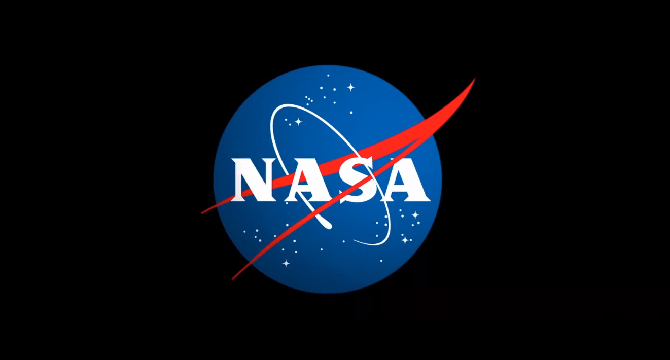
Image Credit: Nasa
NASA Seeks Commercial Partner for Robots Aboard Space Station
- NASA is seeking partnership proposals for the operations, sustaining engineering, and utilization of Astrobee, a free-flying robotic system aboard the International Space Station.
- The commercial partner will be responsible for the Astrobee system and will provide ground-based testing, equipment, and lab space as needed.
- Astrobee, consisting of three cube-shaped robots, can assist astronauts with routine duties, allowing more time for complex work and additional experiments.
- The robots have been used for testing mechanical adhesive technology and mapping the space station, among other tasks.
Read Full Article
16 Likes
Nasa
131

Image Credit: Nasa
Redshift Wranglers Reach Remarkable Milestones
- The Redshift Wrangler project has reached a significant milestone with 200,000 classifications completed by volunteers.
- The project has received over 3,000 comments on Zooniverse talk boards and is preparing a paper on its first batch of 11,000 galaxies.
- Data from the DEIMOS, Gemini, and Subaru telescopes will be included in the paper.
- The Redshift Wrangler project offers a rewarding citizen science experience for those interested in exploring distant galaxies.
Read Full Article
7 Likes
Nasa
122
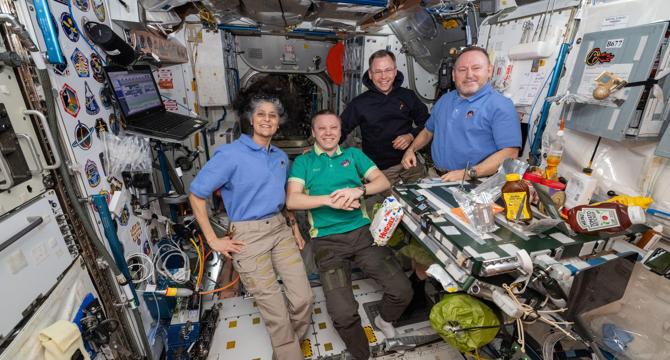
Image Credit: Nasa
Station Preps for Command Change, Conducts Heart and Bone Research
- NASA astronaut Suni Williams will hand over command of the International Space Station to Roscosmos cosmonaut Alexey Ovchinin on Friday.
- Williams, along with NASA astronauts Nick Hague and Butch Wilmore and cosmonaut Aleksandr Gorbunov, will return to Earth aboard the SpaceX Dragon crew spacecraft.
- The SpaceX Crew-10 mission is targeted to launch on Wednesday, March 12 with NASA astronauts Anne McClain and Nichole Ayers as mission commanders.
- The crew members also conducted various human research activities, including cardiovascular health studies and bone health monitoring.
Read Full Article
7 Likes
Digitaltrends
384
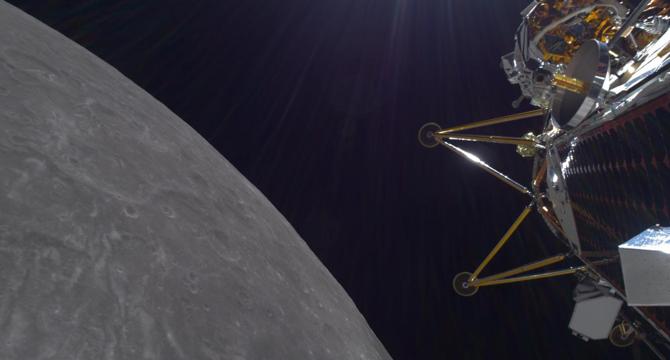
Image Credit: Digitaltrends
Intuitive Machines struggles with a second troubled lunar landing
- Private company Intuitive Machines has encountered problems with its second lunar landing on the moon's surface.
- The main engine did not shut off for several minutes, potentially causing dust disturbance or spacecraft damage.
- The orientation of the spacecraft on the lunar surface is not clear yet.
- However, the solar panels are collecting power, showing a positive sign.
Read Full Article
23 Likes
Popsci
104
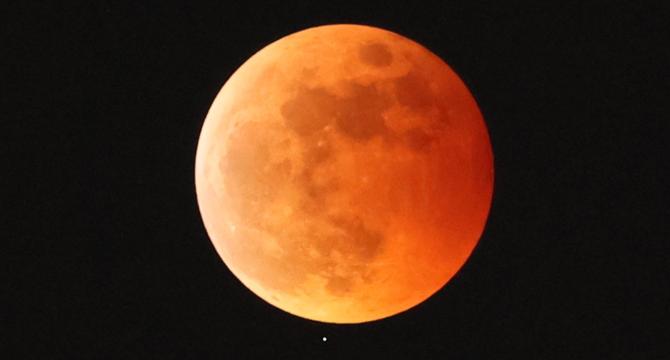
Image Credit: Popsci
How to see the upcoming ‘blood moon’ total lunar eclipse
- On the night of March 13 into March 14, a total lunar eclipse will be visible across North America and other regions, offering a red ghoulish hue, opposite of a solar eclipse.
- To witness the lunar eclipse, individuals in the Western Hemisphere, particularly in North America, can look towards the sky during specific timings provided by NASA.
- During a lunar eclipse, the Earth's shadow covers the moon completely, causing its color to change to a deep, blood-red hue, creating the visual effect of a 'blood moon.'
- The red coloration of the moon during a lunar eclipse is due to the refraction of light through Earth's atmosphere, with red light wavelengths passing through more easily than others.
- The visibility of the blood moon is similar to the red light observed during sunrises and sunsets, as the light travels a greater distance through the atmosphere.
- The difference in the refraction of blue and red light wavelengths in the atmosphere explains the blue color of the sky and the red coloration of the moon during a lunar eclipse.
- The lunar eclipse schedule includes key timings: the moon entering Earth's shadow at 1:09 a.m. EDT, totality beginning at 2:26 a.m. EDT, and concluding with the moon exiting the shadow by 4:47 a.m. EDT.
- Understanding light wavelength's properties plays a crucial role in explaining phenomena like the moon's color change during lunar eclipses and why the sky appears blue.
- Skygazers can enjoy observing the total lunar eclipse with a red hue as the moon passes through the Earth's shadow, showcasing the beauty of celestial events.
- Lunar eclipses, unlike solar eclipses, occur when the Earth blocks sunlight from reaching the moon, leading to the moon's reddish appearance as seen from Earth.
- The upcoming lunar eclipse on March 13-14 offers a natural spectacle for those in the Western Hemisphere to witness the moon's transformation into a captivating 'blood moon.'
Read Full Article
6 Likes
Nasa
244

Image Credit: Nasa
2024 Associate Administrator Awards Honorees
- The ARMD 2024 Associate Administrator Awards recognized NASA employees, contractors, and students for their outstanding contributions and achievements.
- Individual honoree Kenneth R. Lyons advanced NASA's unsteady Pressure Sensitive Paint measurement in wind tunnels.
- The NASA GRX-810 Licensing Team facilitated the licensing of new materials to multiple parties, promoting industry availability.
- Shishir Pandya played a key role in the formulation of a project plan for examining aerodynamic interactions in sustainable propulsor technologies.
- The Electric Vertical Takeoff and Landing (eVTOL) Propulsion Team improved propulsion system component reliability with external collaborations.
- The Self-Aligned Focusing Schlieren Team developed a revolutionary Schlieren system for high-speed flow visualization in aeronautics research.
- Anthony Nerone demonstrated leadership in the Hybrid Thermally Efficient Core project, accelerating the development of advanced engine technologies.
- Diana Fitzgerald's contributions to the Transformational Tools and Technologies project enhanced communication processes for improved project operations.
- Matthew Webster showcased exceptional leadership and skills in advancing NASA projects like Convergent Aeronautics Solutions.
- Salvatore Buccellato identified collaborative opportunities in hypersonics research, furthering advancements in hypersonic technologies.
Read Full Article
14 Likes
Popsci
371

Image Credit: Popsci
Earth’s oldest meteorite crater found in Australia
- Researchers at Curtin University and the Geological Survey of Western Australia (GSWA) have found the world's oldest known meteorite crater in Australia's Pilbara region.
- Based on their study published in Nature Communications, the 3.5 billion-year-old crater may provide new insights into Earth's early eras and the history of life on the planet.
- The impact event that created the crater occurred around 3.5 billion years ago, leaving a 62-mile-wide crater and generating shatter cones - a unique geological feature caused by intense pressure.
- The discovery of this meteorite crater could contribute to a better understanding of continental evolution and the development of life on Earth.
Read Full Article
22 Likes
COSMOS
27
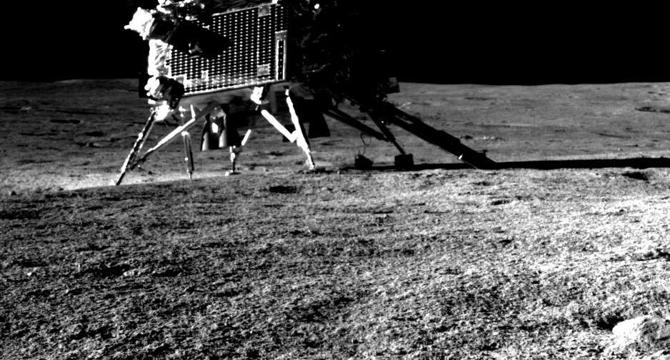
Image Credit: COSMOS
Ice on the Moon more common than previously thought
- Direct measurements taken by India’s Chandrayaan-3 lunar lander may have confirmed the presence of ice just below the Moon's surface.
- This discovery could be valuable for future crewed missions or habitation on the Moon, as a local source of water is essential.
- Chandrayaan-3's Vikram lander landed in a prime location, away from the poles, to investigate the potential for ice.
- The study found that ice could accumulate close to the surface at a certain slope angle, similar to conditions at the lunar poles.
Read Full Article
1 Like
Popsci
294
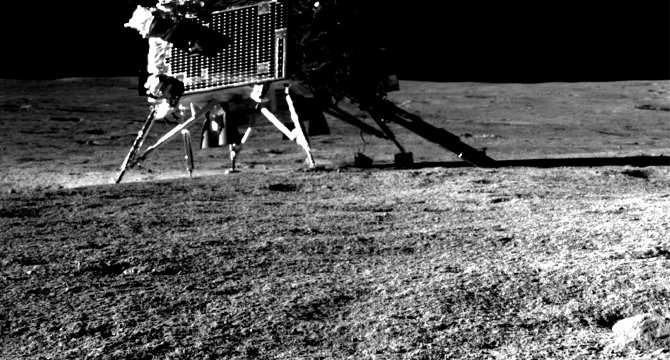
Image Credit: Popsci
New evidence for water lurking under the moon’s poles
- Recent measurements from the Chandrayaan-3 mission reveal surprising variations in surface temperature on the moon's poles.
- The surface temperature discrepancies are attributed to factors like topography, thermal conductivity, and sunlight exposure.
- The moon's surface is covered with a 'fluff layer' that hinders heat conductivity, leading to significant temperature variations.
- Subsurface temperature plays a crucial role in the accumulation and retention of water on the moon.
- The Chandrayaan-3 data suggests that water ice might also be present outside the lunar poles due to suitable topographical features.
- This new study highlights the complexity of water accumulation and storage on the moon.
- Improved models for understanding water-ice migration and stability are being developed based on Chandrayaan-3 mission data.
- The research emphasizes the importance of firsthand data collection to enhance our knowledge of lunar water distribution.
- The presence of water under the moon's poles and surrounding regions signifies potential implications for future lunar exploration and research.
- Further investigations are essential to determine the exact amount and distribution of water ice on the moon.
Read Full Article
17 Likes
The Robot Report
167

Get ready for ROS 1 sunset and learn ROS 2 features at the Robotics Summit
- The Robot Operating System (ROS) is reaching its end of life on May 31, 2025.
- The Robotics Summit & Expo will provide an opportunity to learn about the features and success of ROS 2.
- ROS 2 has been widely adopted in various fields, including warehouse robotics, transportation, ocean research, and more.
- Attending the Robotics Summit will offer insights into the future of ROS 2 and its importance in successful product development and deployment.
Read Full Article
10 Likes
For uninterrupted reading, download the app